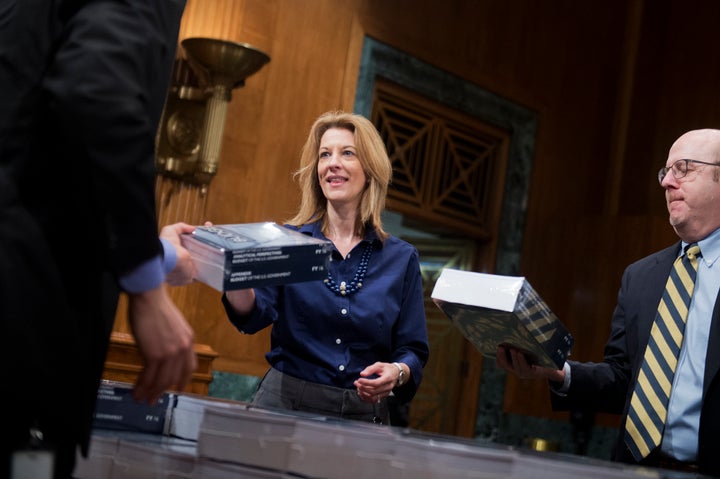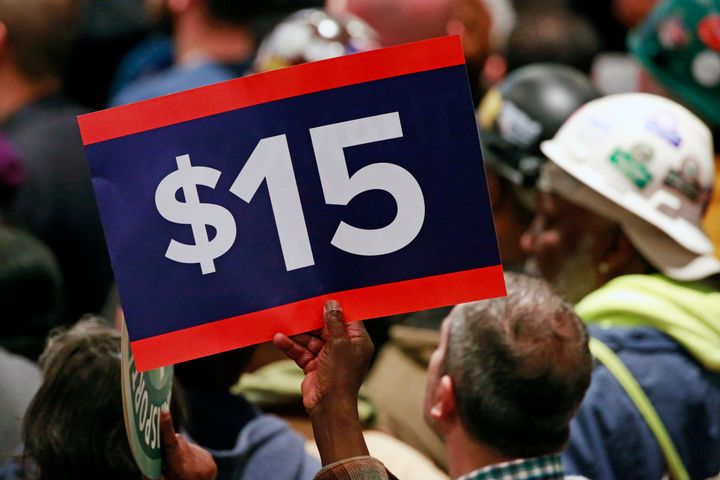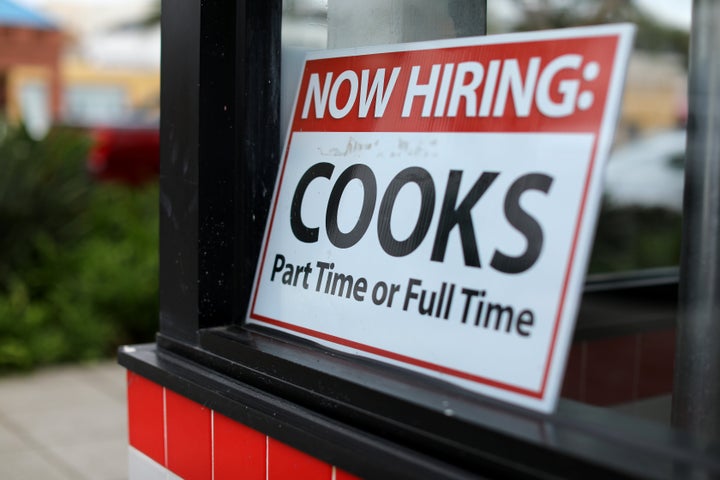In the era of Donald Trump, ambitious progressive policies that were dismissed as fringe a few years ago are increasingly finding a foothold. One of these is the idea that every American who needs and wants a job has the right to one, at a livable wage, with decent benefits.
It’s called a federal jobs guarantee, and it has some heavyweight support. Sen. Bernie Sanders (I-Vt.) backs the idea and has said he will release a detailed plan in the fall. Sen. Cory Booker (D-N.J.) has introduced legislation that would see a three-year pilot project set up to guarantee jobs in 15 regions of high unemployment. Among the bill’s co-sponsors is Sen. Kirsten Gillibrand (D-N.Y.), who tweeted in support of the policy in April.
And when Alexandria Ocasio-Cortez swept to victory over Rep. Joseph Crowley (D-N.Y.), a powerful establishment Democrat, in a congressional primary last month, a jobs guarantee featured high on her list of policies.
So the idea is gaining momentum. But what exactly is a jobs guarantee, and how could it work?
The idea
The premise is that everyone should be entitled to a good job, one that pays at least $15 an hour and comes with benefits such as health care, family leave policies and child care.
The program would be administered at a local level, with federal funding, and jobs would be fitted to people, not the other way around. The aim “is not to change the worker in some fundamental way,” said Stephanie Kelton, a professor of public policy and economics at Stony Brook University and formerly a senior advisor to Sanders. “You take the worker the way they are and you fit the job to the worker.”

“It’s pretty simple at its core level,” Kelton said. “You don’t have to prove anything, you don’t have to meet certain requirements. It’s just an open-ended offer of employment for anyone seeking work, and that’s the end of it.”
Her work, as part of a team at the nonpartisan Levy Economics Institute that analyzed and modeled the idea, has informed Sanders’ support for guaranteed jobs.
The aim
To eliminate involuntary unemployment by creating living-wage, socially beneficial jobs for the millions of Americans who want and need work ― essentially making employment a fundamental right.
It’s not exclusively tailored to address a certain section of the population ― “it’s the whole gamut of potential people who come through the door,” Kelton says ― but one benefit would be the chance to address people marginalized from the workforce, who are disproportionately women and people of color.

It could have a significant effect on poverty levels. In 2016, around 9.5 million people in America who spent more than half the year working or looking for work were nevertheless in poverty. A full-time worker at $15 an hour could lift a family of up to five out of poverty, according to the Levy report.
The wage and benefits package would set a minimum standard for private businesses, supporters say, as they would have to match the government offer. But the policy would not compete with the private sector beyond setting that minimum floor, suggests Kelton, who says that the program would be elastic depending on the state of the economy ― growing in downturns and shrinking during recoveries.
It would be for the community to determine the type of jobs they want and need. These could be jobs in infrastructure, teaching, caring for the young and elderly, environmental restoration or green energy, to name a few. In Sanders’ draft proposal for a jobs guarantee, he writes: “People working under the federal job guarantee will be serving their communities and their country, uniting us together in a common purpose, rebuilding the social fabric of our nation.”
Why now?
The idea of a jobs guarantee is not new. “This is a revival of the kind of thing that FDR fought for, that Martin Luther King fought for,” Kelton said. And the era of Trump and right-wing populism has increased the appetite of some in the Democratic Party to run on big, progressive policies.
It may seem odd that a jobs guarantee is gaining mainstream political attention at a time when unemployment is at 3.8 percent, the lowest level since 2000. But critics say that figure doesn’t reflect the reality that many Americans who want to work are unable to, and feel left behind. Kelton estimates this group includes some 16 to 17 million people.

The figures, for example, do not count as unemployed those who are not looking for work or those who want work but hadn’t searched for a job in the four weeks prior to the survey. And they do include those who are working part-time only because they are unable to find full-time work (an estimated 4.9 million people). Then there’s pay. An increase in employment has not corresponded with a marked increase in wages ― as might be expected in a hotter labor market.
And even if employment levels are improving, supporters say guaranteed public employment could help safeguard people against the next crisis ― whether that’s another financial crash, mass job loss due to automation, or something else.
Finally, Americans seem keen on the idea of guaranteed jobs. Recent polling commissioned from Civis Analytics by The Nation found 52 percent of people in favor of the idea. Polling from the Center for American Progress found even more positive results, with 79 percent of people in favor of guaranteed jobs.
How much would it cost?
It depends on which version you look at ― and costs would obviously fluctuate based on participation ― but whichever way you cut it, the figures are high.
The Levy plan would come in at around $378 billion a year in the first five years, rising to $415 billion in the second five years. A broadly similar jobs guarantee set out in a paper by William Darity Jr. and Mark Paul of Duke University and Darrick Hamilton of the Milano School of International Affairs, commissioned by the Center on Budget and Policy Priorities, would cost around $543 billion a year, or just under 3 percent of the gross domestic product.
The Center for American Progress has a more limited but cheaper version. Its proposal would focus purely on providing guaranteed, $15-an-hour jobs to people without college degrees. The center estimates this would scoop up around 4.4 million workers at a rough cost of $158 billion, “approximately one-quarter of Trump’s proposed tax cut for the wealthy on an annual basis.”
But all of these plans say the costs would be substantially offset by increases in tax revenue as more people entered the workforce, and decreases in the uptake of Social Security programs as well as GDP growth and increased productivity.
How would we pay for it?
“It would be funded the way everything else is funded,” Kelton said. “The government will pay for it.” The Levy report doesn’t include new taxes to fund the project, but analyzes what would happen to the economy if the government simply cut a check for the program. “What the models show is that you can do this without creating an inflation problem,” Kelton said, “and therefore why would you pay for it with tax increases of one kind or another?”
The program could even “pay for itself,” the Levy report says, taking into account reduction in crime, better health, better social and economic stability and reductions in Social Security spending.
The Levy models say that if you bring 15 million people into the jobs guarantee, the private sector would benefit from the subsequent increased buying power, creating around 4.2 million additional jobs. “In the aggregate,” Kelton said, “it’s clear the economy as a whole does far better, and that means that the private sector does far better.”
Darity’s paper is not focused on the financing question, but it suggests the program could be financed through reductions in Social Security spending and through new tax policies like a financial transactions tax, a carbon tax and a modified estate tax. But ultimately, Darity told HuffPost, “the program is, de facto, self-financing ― government makes the outlay and the program will generate the tax revenue to support it.”
What do the critics say?
The jobs guarantee is a polarizing policy, with critics on both sides of the political spectrum.
A key concern with an idea this big and potentially unwieldy is the actual logistics of implementing it. How would the government and local communities be able to come up with suitable, socially beneficial jobs for potentially tens of millions of people? For Matt Bruenig, founder of the People’s Policy Project, a think tank, this is the main problem. “The idea that thousands of administrations across the country will be able to usefully employ random flows of labor with random sets of skills in random durations is fairly implausible,” he wrote in March.
Similarly, Josh Bivens, director of research at the Economic Policy Institute, a progressive think tank, wrote in April: “I don’t think we have the public sector managerial capacity right now to oversee the work of 11 million people ― who will be coming from varying backgrounds and labor qualifications ― and ensure that they will be perceived as undertaking socially useful tasks.”
Meanwhile, criticisms from the right tend to focus on cost. Brian Riedl of the Manhattan Institute, a right-leaning think tank, says he applauds the goal of encouraging good jobs at high wages, but calls the proposal of a guaranteed jobs program “fantasy land.” His criticisms are many and vociferous.
A jobs program could scoop up far more workers than envisioned, maybe 30 million, Riedl told HuffPost. “The wages and benefits would be higher than what 40 percent of workers already earn,” he said. “Therefore they would not only attract the unemployed but those out of the workforce, retirees and anyone earning less or who is unhappy with their job.” At the $56,000 some advocates have estimated each job would cost, the whole program could cost between $1 trillion and $2 trillion a year, he says.
Riedl argues such a program would also “eviscerate” low-paying sectors like retail, fast food and landscaping. “The laws of supply and demand are very clear that not all industries, especially in rural areas where costs are lower, can afford to pay $15 an hour plus full benefits,” he said. And even if the private sector could afford to pay, he says, many workers might be attracted to the government program because they’d be less likely to get fired from a guaranteed job scheme.

Washington Post columnist Robert Samuelson writes that guaranteed jobs would “almost certainly be a disaster,” and that such a program would add to the deficit and lead to inflation. In a May column, he expressed his opposition bluntly: “The fact that it’s taken seriously is evidence that many Democrats, like Republicans before them, embrace loony economic agendas that are more public-relations gestures than sensible policy.”
Has any other country done it?
Not to the universal extent envisioned here, but two countries have initiated forms of a jobs guarantee.
In Argentina, the Jefes y Jefas de Hogar Desocupados (Program for Unemployed Male and Female Heads of Households) was introduced after a financial crisis in 2001. Federally funded and locally administered, the program offered guaranteed employment of at least four hours a day in community-created jobs to the unemployed heads of households. The program was phased out after a few years and replaced with more traditional social spending efforts.

And India has the National Rural Employment Guarantee, which gives up to 100 days of guaranteed paid employment per year to workers from rural households. It was found to increase earnings in low-income households by 13 percent and reduce the gender pay gap. The program is still going, but payments to workers are frequently late and the government has been accused of denying it funds.
Will it be implemented in the U.S.?
Not without a radical restructuring of the political landscape. “It’s going to require Democrats to take over the House and the Senate and win back the White House,” Kelton said. “The GOP is not going to deliver this to us ― we are going to have to fight for it.”
For more content and to be part of the “This New World” community, follow our Facebook page.
HuffPost’s “This New World” series is funded by Partners for a New Economy and the Kendeda Fund. All content is editorially independent, with no influence or input from the foundations. If you have an idea or tip for the editorial series, send an email to thisnewworld@huffpost.com.
